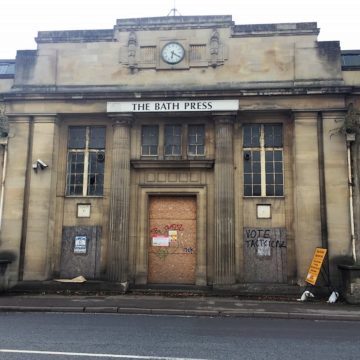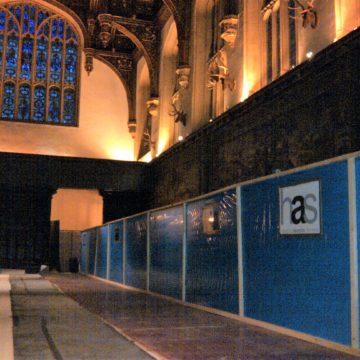HAS in Scotland for Network Rail
HAS work in West Lothian, Scotland removing asbestos cement on a viaduct as part of project for Network Rail. HAS worked on a weekend to complete the work.
Asbestos can be found in any building that was constructed pre-2000. Any building built or refurbished prior to this could contain asbestos, even historical and heritage buildings. HAS are experts with historical buildings such as churches, listed buildings, royal palaces, crypts and sensitive buildings. Aged buildings such as these can contain asbestos containing materials because of refurbishment works, or additions to the buildings during periods where asbestos was used frequently as a building material. This was generally in the 60’s and 70’s, but asbestos was used commonly throughout the 20th century.
HAS are experts working with historical buildings including churches, listed buildings, royal palaces, crypts and sensitive buildings. Aged buildings such as these can contain asbestos materials because of refurbishment works, or additions to the buildings during periods where asbestos was used frequently as a building material. This was generally in the 60’s and 70’s, but asbestos was used commonly throughout the 20th century.
HAS were at St Marys De Crypt in Gloucester in May-June 2016. HAS undertook work at the Church which is part of a Heritage Lottery funded project to regenerate St Marys de Crypt Church and the Old Crypt Schoolroom. Plans are underway to turn the historic Grade I listed church of Norman origin and the Grade II* listed Tudor Schoolroom into an open and accessible place of worship, community hub and venue for arts and culture.
HAS undertook a complex project working on a basement area, which contained remnants of a crypt from asbestos debris and contamination. This was expertly coordinated to accommodate the unusual aspects of the working environment. Stored within the Crypt were some very large historical and ornate stone works. These had to be decontaminated and carefully moved to allow the areas beneath to be cleaned. These were thoroughly decontaminated and remained in the live area during clearance.
Access to the area was via a metal trap door. Scaffolding was erected around this, whilst also using the fabric of the building to form a compound to ensure the area was secure and prevent any unauthorised access to the enclosure. HAS also had to plan effective placement of the decontamination unit. Due to the formation of the graveyard and head stones, HAS were unable to safely locate the decontamination unit and so two modular hygiene facilities were used instead.
Following commencement of the removal works the contamination was discovered to be widespread in both the floor area and beneath the stored masonry. Operatives had dug the floor area to a depth of 12 inches in some locations and were continuing to find buried asbestos insulation. Similarly, the stored masonry concealed widespread asbestos contamination.
On the clients request we removed the top surface of the floor and sealed it. The masonry was cleaned in situ and a framework constructed around, then sealed with OSB board and polythene. The resulting solution passed independent tests.

HAS work in West Lothian, Scotland removing asbestos cement on a viaduct as part of project for Network Rail. HAS worked on a weekend to complete the work.

Hereford Asbestos Services were the preferred contractor for Herefordshire Library in 2016.

HAS were onsite to ensure the safe removal of an area of asbestos insulation board (AIB) which was being used to box in an electrical fuse box.

HAS were commissioned in 2015 to undertake a large-scale project on former Cadbury’s Factory site in Keynsham, Bristol

HAS work in the World Heritage City of Bath undertaking large scale asbestos removal and decontamination on historic building, The Bath Press.

HAS have taken on several projects for the Historic Royal Palaces charity including various projects at Hampton Court Palace, South East London.
Units 2-3 Pearson Business Park, Coldnose Road, Hereford HR2 6JL
01432 270113
info@herefordasbestos.co.uk